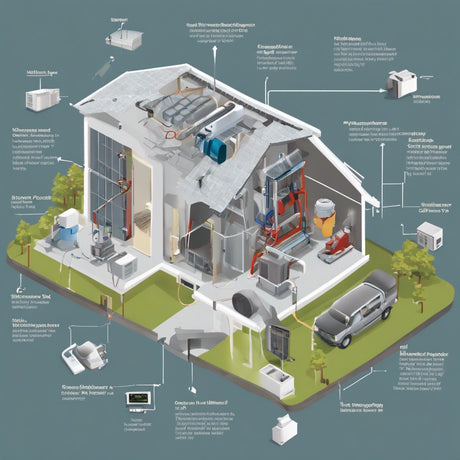- No products in the cart.
The Ultimate Guide to HVAC Installation Services
15
Feb
Introduction: Installing a new HVAC (Heating, Ventilation, and Air Conditioning) system is a significant investment in your home or business. Whether you're replacing an old system or installing one for the first time, it's crucial to understand the process and ensure it's done correctly. In this comprehensive guide, we'll cover everything you need to know about HVAC installation services, from choosing the right system to finding a reliable contractor and ensuring proper installation.
-
Assessing Your Needs: Before diving into HVAC installation, it's essential to assess your heating and cooling needs. Consider factors such as the size of your space, insulation quality, local climate, and desired energy efficiency. An HVAC professional can help you determine the appropriate size and type of system for your specific requirements.
-
Choosing the Right System: HVAC systems come in various types, including central air conditioning, ductless mini-splits, heat pumps, and furnaces. Each has its advantages and is suitable for different applications. Factors to consider when choosing a system include efficiency ratings, upfront costs, ongoing maintenance needs, and compatibility with your existing infrastructure.
-
Hiring a Qualified Contractor: Finding a reputable HVAC contractor is crucial for a successful installation. Look for licensed, insured, and experienced professionals with a track record of quality workmanship. Ask for recommendations from friends, family, or online reviews, and request multiple quotes to compare prices and services.
-
Conducting a Home Evaluation: A thorough evaluation of your home is necessary before installing an HVAC system. This includes assessing the layout, ductwork, insulation, and any existing equipment. The contractor should perform load calculations to determine the heating and cooling requirements accurately.
-
Ensuring Proper Sizing: Proper sizing is critical for optimal performance and energy efficiency. Oversized systems can lead to short cycling, uneven temperatures, and increased energy consumption, while undersized systems may struggle to maintain comfort levels. A qualified contractor will perform Manual J calculations to determine the appropriate size for your home.
-
Installation Process: The installation process involves removing old equipment (if applicable), installing the new system, connecting ductwork (if necessary), and configuring thermostat controls. The contractor should follow manufacturer guidelines and local building codes to ensure compliance and safety.
-
Testing and Commissioning: Once the installation is complete, the contractor should thoroughly test the system to ensure it's functioning correctly. This includes checking for leaks, verifying airflow, calibrating thermostat settings, and testing heating and cooling cycles. A comprehensive commissioning process helps identify and resolve any issues before finalizing the installation.
-
Maintenance and Follow-Up: Regular maintenance is essential for prolonging the life of your HVAC system and maintaining optimal performance. Schedule annual tune-ups and filter replacements to keep your system running smoothly. Additionally, follow up with the contractor if you encounter any problems or have questions about your new HVAC system.
Conclusion: Investing in a new HVAC system is a significant decision that requires careful planning and execution. By following the steps outlined in this guide and working with a qualified HVAC contractor, you can ensure a smooth and successful installation process. Remember to prioritize energy efficiency, proper sizing, and ongoing maintenance to maximize comfort and savings in the long run.













